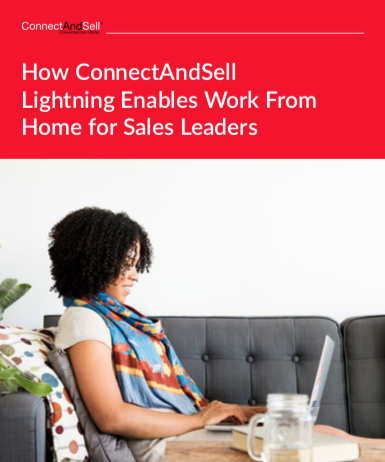
Part 2: Justice Is Blind (Sort of). But Business?
In Part 1 of this blog series, I defined the methods that a business — through its salespeople — can use to get to know its customers: the zero-advantage public information sources; the one-way communications of advertising, focus groups, and social media; and the one-on-one methods of gleaning more-advantageous private information through face-to-face meetings.
There is a more efficient way of doing primary research that yields that private information essential to beating competitors: phone calls themselves. There are two ways of using the phone to harvest intelligence that is yours, all yours:
- Have “ambush” conversations — cold calls — and unscheduled follow-up and referral conversations that flow from introduction to discovery. This kind of conversation generally requires a senior touch: we’re talking business here, not product capabilities, features, benefits, and other such sales stuff.
- Have similar ambush conversations solely for the purpose of getting a scheduled conversation on the calendar. This “get the meeting” conversation can be effectively conducted by anyone who sounds confident and trustworthy and who is skilled at setting appointments. See “Five Sentences That Will Change Your Life” for a proven way of securing a “breakthrough sharing session,” a safe place for beginning to learn about each other’s business to discover if there is a reason for further exploration.
Both of these approaches depend on the same thing: a phone call to the right person, which leads to talking more frankly about what’s what. From the prospect’s perspective, that exploratory conversation is a chance to learn about something that might be helpful for their business in a way that works for them personally. From the seller’s perspective, it’s a much bigger deal: a chance to learn about need and potential fit before their fiercest competitor has a chance to learn the same things. This competitive advantage from doing primary research is crushing.
But one conversation isn’t generally enough. And the skill to carry it out effectively is thin on the ground. So, both approaches go through the eye of the same needle: the ubiquitous challenge of getting important business people into phone conversations.
Meanwhile, back at the ranch…
On our team here at ConnectAndSell, we use a mix of both techniques, with a twist.
- We employ a small, very skilled team of callers whom we arm with targeted lists and the ability to have 25 or more conversations per day. The lists are curated for hypothetical qualification at the account level — in our case, funded startups, public companies, and large private companies. (We sell to others; we just don’t hunt them.) These lists are also curated for role: senior sales and marketing executives and the occasional batch of CEOs. These callers — let’s call them SDRs — each manufacture about 5 breakthrough-sharing meetings per day for our senior account executives — let’s call them AEs, although some of them carry titles like “SVP Sales and Marketing” or “Founder and Executive Chairman.” Or “CEO” for that matter. These appointment-setting conversations are followed by appropriately tailored emails; and whatever intelligence they yield is captured in call notes that are squirreled away attached to Salesforce tasks. (The update is automatic: we don’t like our reps wandering around in the scrolling wasteland of a CRM more than is absolutely necessary, as we think conversations are where the action is.) The key to all of this is that these SDRs operate entirely in conversation mode all day, backed by about 500-1,000 dials per day done for them by the ConnectAndSell Lightning™ magic telephone.
- Each AE spends part of their day prospecting, having first and follow-up unscheduled conversations with 10 to 20 people per day for the purpose of setting a breakthrough-sharing meeting. Inevitably, they gain a bunch of intel in these conversations, which is, as with the SDRs, captured and attached to completed-call activity records in Salesforce.
- All roads lead to a meeting that comes with something of palpable value: the opportunity to use ConnectAndSell in production for a full day. This is generally face-to-face and onsite at the prospect’s place of business — or at least where their reps work. Of course, massive intelligence can be shared both ways at such a get-together, especially given that the focus is on having a real experience. Imagine 5 or 10 or even 30 reps having 25 conversations or more each; the learning ramps fast and builds on itself, providing lots of material for deep exploration of possibilities.
The eyes have it. But the toast? Not so much.
Competitively, the impact of a program like this (which any company can emulate in a matter of a week or two — essentially “ABM in a box”) is that private intelligence, gathered by primary research, flows much faster to you than to your competitors. This intelligence itself improves your targeting, both regarding accounts and individuals; your improved targeting leads immediately, at 25+ conversations per day, to more intelligence; and this virtuous cycle leads to an efficient qualification process and a dominant competitive position versus anyone who shows up late, or less well-informed. And your competitors who rely on one-way communication — email, search, content, most social media (regardless of the name “social,” let’s face it, there’s a lot of spam going on out there) — will simply be crushed by your superior intelligence and first-engagement advantage.
So, when I hear someone comparing, say, B2B email to cold calling by talking about open rates, connect rates, conversation-to-meeting conversion rates, and all that easy-to-talk-about stuff that feels very scientific and measurable, I think this: the choice to be relatively blind to the realities inside your chosen customer set is easy to make based on perceived cost and ease of blasting “tailored” information (or using chase-bots to send endless streams of artificially intelligent emails, usually from a robot named Jennifer). How could you lose?
The answer is simple. If your fiercest competitor chooses to not be blind, chooses instead to do the primary research to gain private information before you have even engaged, you will soon be something else that turns out to be blind: toast.

